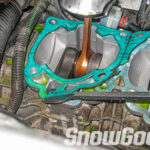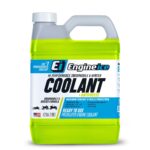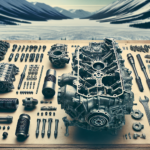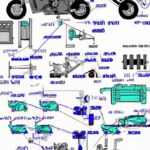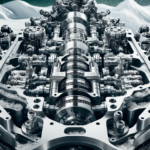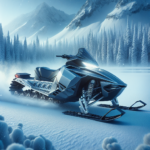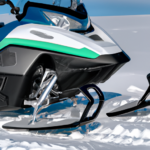You’re knee-deep in snow, the frosty air kissing your cheeks, your snowmobile purring beneath you – life couldn’t be better. But wait, have you ever asked yourself what type of coolant your snowmobile needs? This might seem like a minor detail, but remember your snowmobile’s performance and engine longevity hinge greatly on this aspect. The following article helpfully details the ins and outs of snowmobile coolants, guiding you in choosing the best coolant for your trusty steed to ensure optimal performance on those thrilling winter escapades.
What is coolant?
Let’s start with the basics. A coolant, in layman’s terms, is a magical fluid that keeps your overworked engine cool in face of rising temperatures and helps avoid a sudden meltdown. It’s that functional lifeblood that circulates through your engine, maintaining an optimal temperature and preventing the seizing or overheating of parts.
Purpose of coolant
So, why is coolant important? The reason is simple. When your engine works hard, it gets hot. Really hot. And if it gets too hot, things start to break down. Enter coolant. This fluid absorbs that excessive, damaging heat and whisks it away to the radiator where it’s released into the atmosphere.
Types of coolant
Interestingly, not all coolants are created equal. They come in various types, primarily categorized into two – inorganic acid technology (IAT) and organic acid technology (OAT). A major difference lies in their formulations, with IAT being silicate-based and OAT being primarily composed of organic acids.
Understanding Snowmobile Coolants
Navigating into more specific territory, let’s understand the role of coolants in snowmobiles.
Importance of specific coolant in snowmobiles
Like any other engine-running machine, your snowmobile needs a coolant to function optimally. However, just any coolant won’t do. A snowmobile coolant is a tad different because it’s designed to work in really cold conditions. It must retain antifreeze properties to avoid icing up of the engine.
Difference between snowmobile coolants and other coolants
Snowmobile coolants vs. other coolants – what’s the difference, you ask? Well, the most prominent difference is their freezing points. Snowmobile coolants are efficiently designed to withstand much lower freezing points. Thanks to special additives, they help maintain vehicle functionality even in polar-like conditions.
Proper Maintenance of Snowmobile Coolants
The virtues of coolant maintenance can’t be sang loud enough. Proper up-keep is what separates a smooth-running snowmobile from a break-down-prone one.
When to change Snowmobile coolant
An important question: when should you switch up the coolant in your snowmobile? As a general rule of thumb, a coolant change is needed every two years or so. But hey, always refer to your owner’s manual for specific numbers.
Risks of improper maintenance
Slacking off on coolant maintenance comes with its fair share of risks. Forgetting to replace or top-off your coolant can cause corrosion, overheating, or ultimately a total engine fail. Not a pretty picture, is it?
Types of Snowmobile Coolants
Snowmobile coolants come in two main forms – prediluted and concentrated. Let’s dive into each.
Prediluted Coolant
Beauty of simplicity! That’s what prediluted coolants bring to the table. They’re ready to use. No extra water needed, no confusion, and no ratios to calculate. Just open the lid and pour it in.
Concentrated Coolant
The concentrated coolant, on the other hand, requires a bit of preparation. As the name suggests, it’s a concentrate – super potent, to be diluted with water before use.
Prediluted Coolants in Detail
Understanding the merits and demerits of prediluted coolants helps in making an informed decision.
Benefits of Prediluted Coolants
The most significant benefit of prediluted coolants? Convenience. No mess, no calculations. It’s a straightforward “pour and go” scenario. Plus, there’s very little chance of error – you can’t mess up the dilution ratio because you don’t have to dilute!
Limitations of Prediluted Coolants
But prediluted coolants aren’t all rainbows and unicorns. Their major drawback is that they cost more per litre when compared to concentrated coolants. Moreover, they’re not an option if the required water-to-coolant ratio is not standard.
Concentrated Coolants in Detail
Then there are concentrated coolants, each with its pros and cons.
Benefits of Concentrated Coolants
Concentrated coolants may seem demanding, but they do offer a greater advantage of customization; you can adjust the water-to-coolant ratio as per your specific needs. Plus, they’re more cost-efficient in the long run.
Drawbacks of Concentrated Coolants
But concentrated coolants require more work. You have to be sure of the ratios, and there’s always the potential risk of human error disturbing the careful balance of proportions.
Do It Yourself: Changing Snowmobile Coolant
Ready to get your hands dirty? Changing your snowmobile coolant isn’t rocket science. But there are a few things you need and steps to follow.
Materials needed
To get the job done, you’ll need a wrench, a bucket to catch the old coolant, gloves, goggles, and of course, new coolant.
Step-by-step instructions
First, you’ll need to locate the drain plug and place your bucket under it. Using your wrench, unscrew the plug and let the coolant drain out. Once that’s done, replace the plug, head over to the coolant reservoir, and pour in your new coolant. Do remember to keep the old coolant out of reach of pets and children; it’s poisonous.
Consideration Factors when selecting a snowmobile coolant
When it’s time to choose a snowmobile coolant, always consider the model and make of your snowmobile, environmental conditions, frequency of use, and the engine type.
Brand Recommendations for Snowmobile Coolants
Whether you swear by the popular coolant brands or you’re willing to give the new ones a shot, there’s a myriad of quality coolants to choose from.
Most popular brands
Some of the most popular snowmobile coolant brands include Ski-Doo, Polaris, and Arctic Cat. These are trusted brands known for their high-quality coolants.
New brands to consider
If you’re open to newer brands, explore names like AMSOIL and Engine Ice. They’ve been creating quite the buzz in the market.
Common Mistakes when choosing and using Snowmobile Coolants
Avoid these common pitfalls when it comes to snowmobile coolants.
Improper dilution
Over-diluting or under-diluting the coolant can lead to engine damage. Always adhere to manufacturer’s recommendations.
Ignoring coolants replacement schedule
Postponing the coolant replacement beyond the stipulated schedule can result in engine overheating or failure. Regular up-keep is crucial.
Not considering manufacturer’s instructions
Your snowmobile’s manufacturer has issued specific guidelines for a reason. Stick to them for optimal performance.
And that’s all there is to know about snowmobile coolants! Remember, it’s the engine’s coolant that keeps the calamity at bay and helps maintain peak performance in your powdery pursuits. So, choose wisely, and happy snowmobiling!
- What Snowboard Bindings Should I Get? - January 23, 2024
- What Size Screws For Snowboard Bindings? - January 23, 2024
- How To Snowmobile On Water? - January 23, 2024


